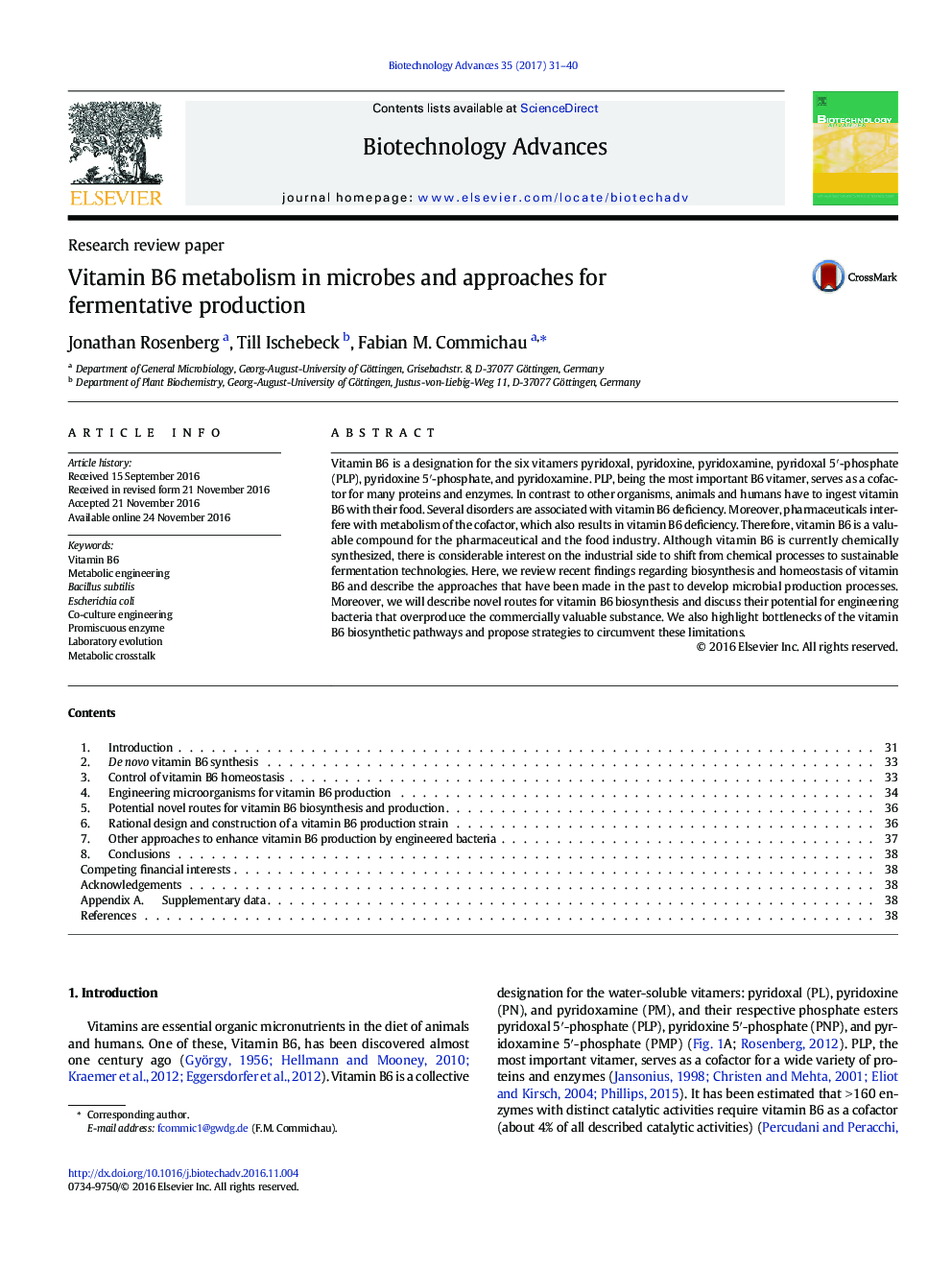| Article ID | Journal | Published Year | Pages | File Type |
|---|---|---|---|---|
| 6451181 | Biotechnology Advances | 2017 | 10 Pages |
â¢Vitamin B6 production is currently carried out by chemical synthesis using toxic/1 expensive compounds.â¢Attempts for fermentative production of vitamin B6 are summarized.â¢Current knowledge about vitamin B6 metabolism in many microbiological species is conveyed.â¢Novel approaches to overcome the hurdles of fermentative vitamin B6 production are discussed.â¢A ready-to-use rational design approach is provided to researchers of the field.
Vitamin B6 is a designation for the six vitamers pyridoxal, pyridoxine, pyridoxamine, pyridoxal 5â²-phosphate (PLP), pyridoxine 5â²-phosphate, and pyridoxamine. PLP, being the most important B6 vitamer, serves as a cofactor for many proteins and enzymes. In contrast to other organisms, animals and humans have to ingest vitamin B6 with their food. Several disorders are associated with vitamin B6 deficiency. Moreover, pharmaceuticals interfere with metabolism of the cofactor, which also results in vitamin B6 deficiency. Therefore, vitamin B6 is a valuable compound for the pharmaceutical and the food industry. Although vitamin B6 is currently chemically synthesized, there is considerable interest on the industrial side to shift from chemical processes to sustainable fermentation technologies. Here, we review recent findings regarding biosynthesis and homeostasis of vitamin B6 and describe the approaches that have been made in the past to develop microbial production processes. Moreover, we will describe novel routes for vitamin B6 biosynthesis and discuss their potential for engineering bacteria that overproduce the commercially valuable substance. We also highlight bottlenecks of the vitamin B6 biosynthetic pathways and propose strategies to circumvent these limitations.
